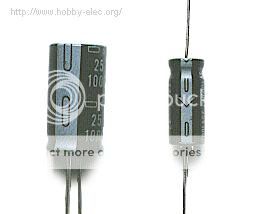lyberty5
Well-Known Member
This morning I wired my TI regs for a new GCP, And when i turned on the 12V supply, two caps blew up, nothing dangerous but now I'm scared that it will happen again..
But I think I found the issue, I spent all year drawing caps as symetrical parrallel bars, it led me to think caps don't have polarity, but the cap itself is asymetrical, one leg is longer, and one side is blue..
I had previously wired a set of regs for my first gcp and nothing had happened but it was a year ago, I can't remember if I thought caps had polarity or not back then..
Anyways, to sum up, do caps have polarity? (do they have a + and -)
(apparently, wikipedia and my old blown up caps tend to say they do)
But I think I found the issue, I spent all year drawing caps as symetrical parrallel bars, it led me to think caps don't have polarity, but the cap itself is asymetrical, one leg is longer, and one side is blue..
I had previously wired a set of regs for my first gcp and nothing had happened but it was a year ago, I can't remember if I thought caps had polarity or not back then..
Anyways, to sum up, do caps have polarity? (do they have a + and -)
(apparently, wikipedia and my old blown up caps tend to say they do)


